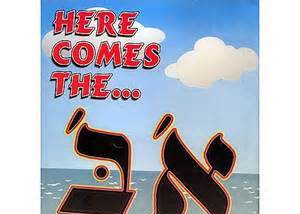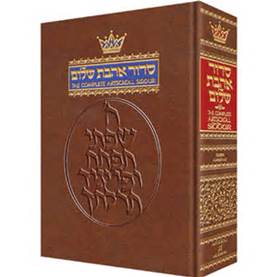In general, prayers may be recited in English instead of the traditional Hebrew. Although there is much holiness invested in the Hebrew text, if you  are not able to read Hebrew reciting it in English is acceptable.
are not able to read Hebrew reciting it in English is acceptable.
There are, however, many resources to enable you to learn Hebrew Reading and to be able to follow in synagogue, and recite the prayers in the traditional way.
National Jewish Outreach Program, NJOP, developed a 5 part Hebrew Reading Crash Course. I have taught it a number of times with great success. The course is based on a pamphlet-type text, and mnemonic devices that make it easy and fun for someone who knows English to learn how to read Hebrew. The key to success is REVIEW. You should aim to do 15 minutes a day. I created the following audio review sessions to support the participants to my class in their home review. (Pages and line numbers are based on the NJOP Hebrew Reading Primer.)
Additionally, ArtScroll has published a Siddur (Prayer book) which has translation and transliteration, so that you can confirm the pronunciation of a word, and also learn its meaning.

For about a year I conducted a beginners service on Sunday mornings in which we recited the main parts of the prayers in unison. many people have found this “group momentum” feeling to be just what they needed to build proficiency. The recordings of each section are available below. (Page numbers are based on the Classic ArtScroll Siddur.)
Morning Blessings: startbeg2summ
Pisukei Dzimra/ Verses of Song: pisukeidizimrabeg2summ
Blessings Before Shema: shemablessingsAbeg2summ
Shema: shemabeg2summ
Blessings After Shema: shemablessingsBbeg2summ
Shemoneh Esrei/ Weekday Amidah: shemonehesreibeg2summ
As with all areas of Judiasm, we strongly recommend that you link up with a knowledgeable mentor. AJOP, Association for Jewish Outreach Professionals is a good resource.

As I was learning more and more with Rabbi Rhine I was anxious to join the minyan at the shul and be able to daven along with the congregants who were by far more proficient in Hebrew and in the structure and the order of prayer. Rabbi Rhine committed countless hours every Sunday morning for beginners like me; arranging davening and learning how to recite the prayers. It was literally a spring board for me and an essential part which allowed me to make a transition to a regular minyan. It still took me many years to master my Hebrew and it’s an ongoing process to this day, but those Sunday mornings with Rabbi Rhine will forever stay with me and warm my heart and mind…